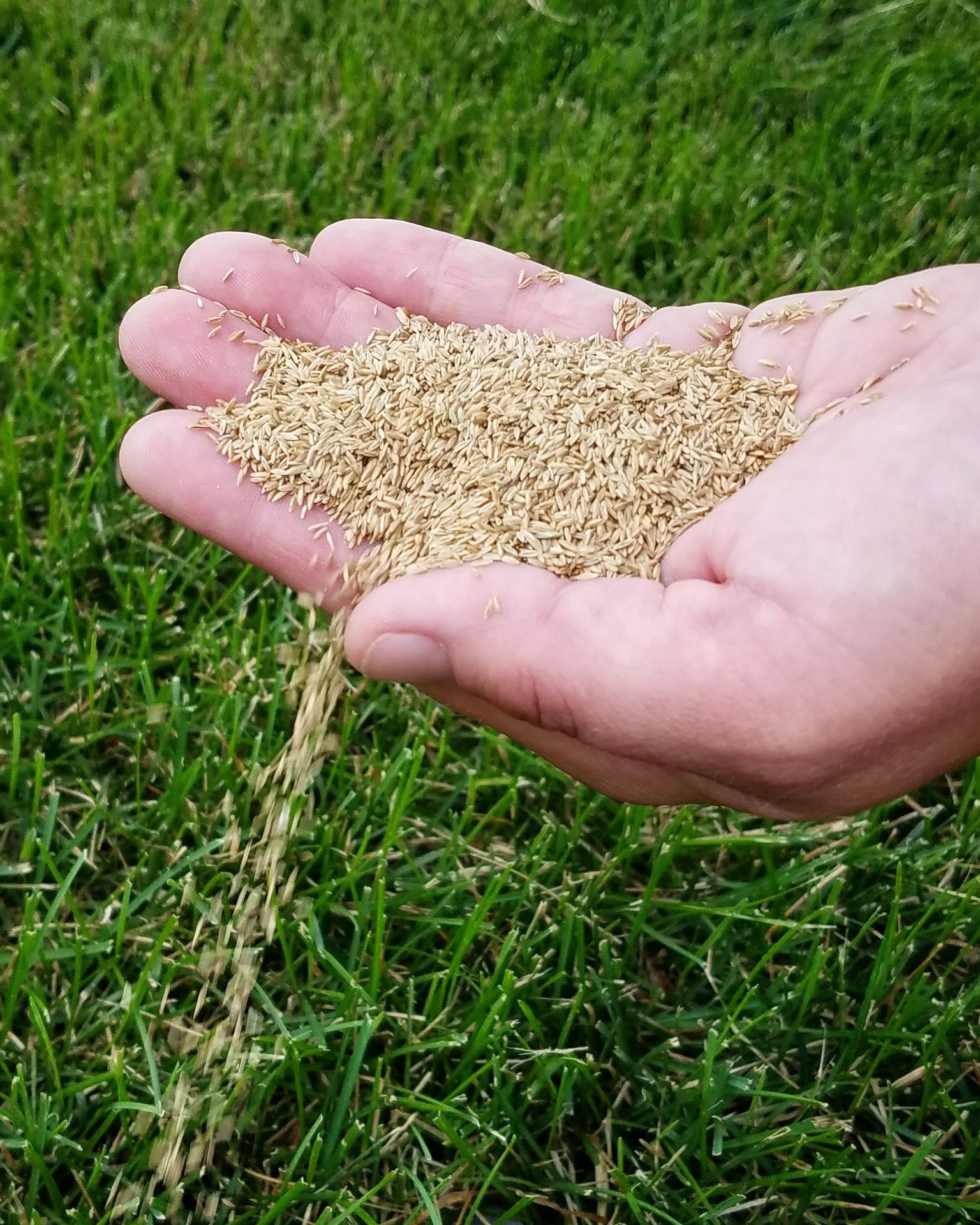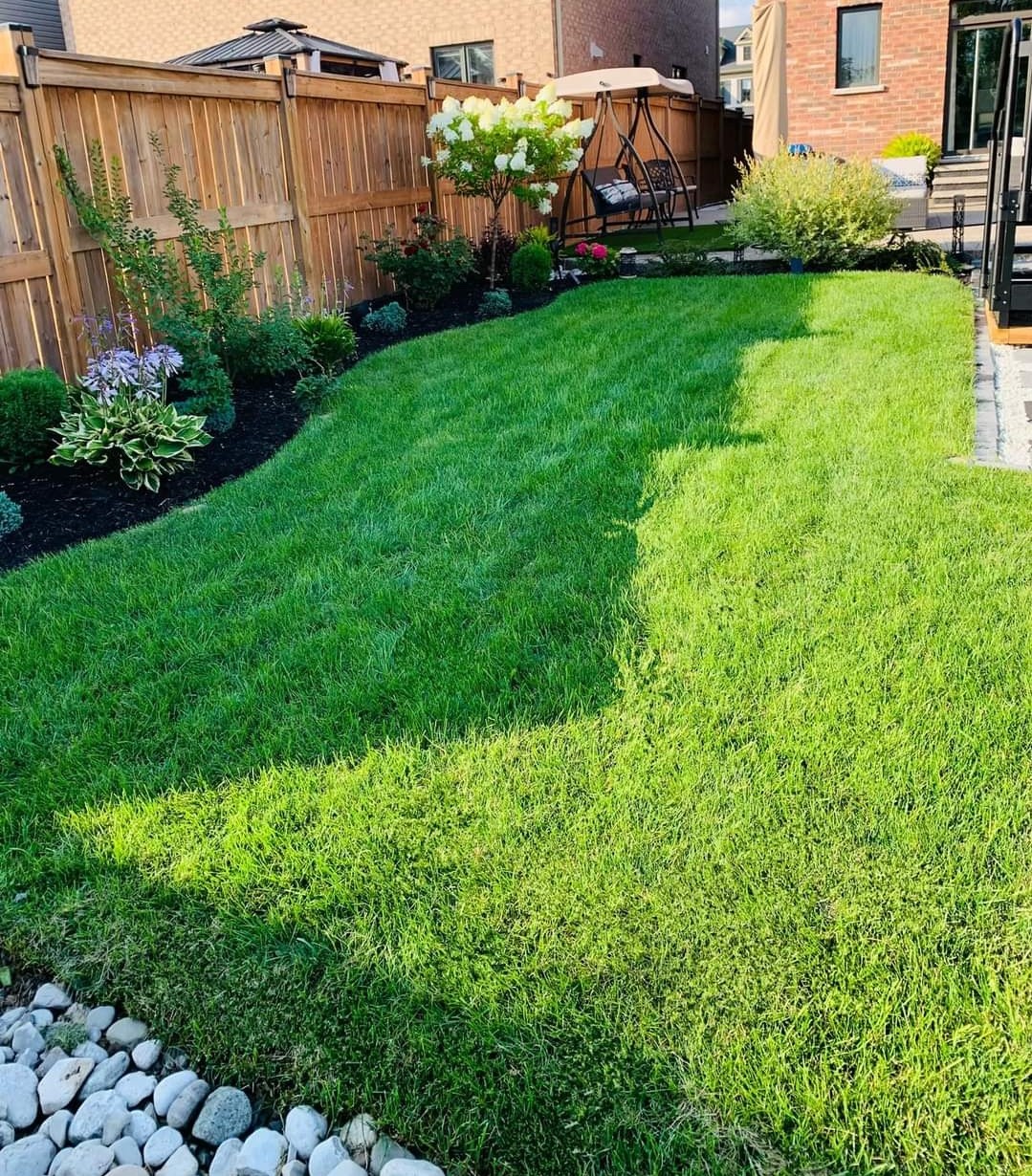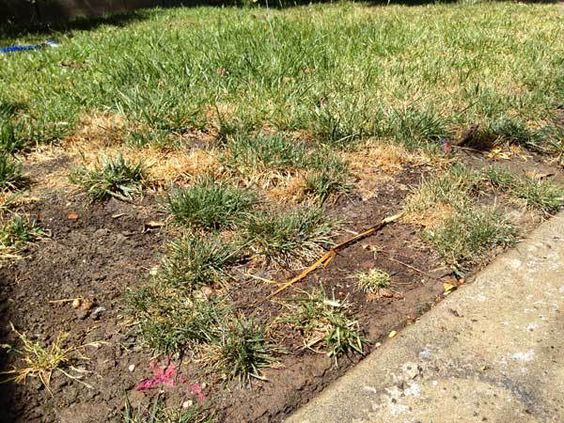Is your lawn thinning out for one reason or another or generally not looking its best, and you would want to rejuvenate it? Overseeding can help you achieve this goal, as this practice can make your lawn thicker, greener, and more resilient.
Overseeding can be a game changer if you want to thicken your lawn, introduce new grass varieties, repair bare spots, enhance appearance, and improve its health. However, what does overseeding entail? Is it just a matter of spreading grass seeds on your lawn?
No, you must follow the correct steps when overseeding your lawn. This post provides everything you should know about overseeding your lawn, including its definition, benefits, frequency, and how to do it.
What’s Overseeding?
First and foremost, let’s define overseeding to help you understand what it is before delving deeper into this practice.
Overseeding refers to a horticultural practice done to improve an existing lawn’s appearance and health. It involves spreading a layer of grass seed over your lawn, typically during the cooler months of the year when grass growth is more favorable.
The primary goal of overseeding is to introduce new grass varieties or reinforce existing ones, thereby increasing the density of grass plants in the lawn. Overseeding promotes thicker and healthier grass coverage grass that has become thin, worn, or damaged due to factors like foot traffic, pests, drought, disease, or other environmental stressors.
Is Overseeding Worth It?
Now that you know what overseeding is, you probably wonder, are there benefits to overseeding my lawn? Is it worth it? Yes, overseeding your lawn is worth it.
Check out the benefits of overseeding below.
a) Enhanced Grass Density
Over time, your lawn can develop thin or sparse areas due to factors like foot traffic, environmental stress, pests, diseases, or natural wear and tear. Overseeding significantly increases the number of grass plants per square foot, resulting in a denser and more lush lawn.
b) Your Lawn Will Look Its Best
Overseeding will transform your lawn into a lush, vibrant green space. It helps fill bare spots, creating a more uniform lawn with consistent color and texture.
Fresh grass from overseeding will also give your lawn a vibrant green color, enhancing its overall appearance. You will be more inclined to spend more time outdoors on a beautiful, lush lawn than.
c) Weed Suppression
A thick, healthy lawn can naturally suppress weed growth by crowding and shading them out. So, overseeding can help reduce weed infestations, as the new grass plants compete with weeds for resources.
Read more: How To Get Rid Of Weeds In Grass Naturally
d) Improved Resistance to Pests and Disease
When you overseed your lawn, you often introduce a mix of grass species and varieties. Some grass varieties are bred to be more resistant to specific lawn diseases. By incorporating these resistant varieties through overseeding, you can minimize disease outbreaks.
Also, new, healthier grass plants are more vigorous and can withstand environmental stressors, including pest and disease pressure. Moreover, a denser lawn resulting from overseeding can outcompete weeds.
e) Better Soil Health
As new grass plants grow, they promote nutrient cycling and microbial activity, boosting soil health. This can lead to healthier, more fertile soil over time. In addition, a thicker grass cover reduces water runoff and promotes water absorption into the ground.
Overseeding can also help alleviate compaction by promoting root growth and soil aeration.
f) Erosion Control
When you overseed your lawn, the new grass plants establish robust root systems that penetrate the soil and help bind it together. These roots act as anchors, holding the soil in place and preventing erosion, especially in sloped or vulnerable areas.
Moreover, a dense, healthy lawn created through overseeding intercepts and absorbs rainfall, reducing the amount of water that runs off the surface. This reduces the erosive force of rainwater, preventing soil erosion.
Furthermore, the dense grass cover helps prevent topsoil from being blown away by strong winds.
g) Improved Lawn Longevity
You can rejuvenate an aging lawn and, in the process, extend its life by several years or even decades by overseeding it. Additionally, overseeding makes your lawn more resilient to stress, diseases, weeds, and pests.
h) It’s A Cost-Effective Maintenance
Overseeding is generally less expensive than completely renovating a lawn. It also needs less effort and time than starting from scratch.
Overseeding is also less disruptive to your lawn and landscape compared to renovating or replacing your entire lawn. This is because it requires less excavation, removal of existing turf, and disposal of old grass, which can translate to cost savings.
How To Overseed A Lawn
Here’s how to overseed a lawn effectively:
Step 1. Choose the Right Time
Timing is crucial for successful overseeding, so make sure you get the time right. In most regions, early fall (late summer in some areas) is the best time to overseed while the soil still has more moisture and warm- conditions that help promote seed germination.
You can overseed your lawn in spring, but you will likely contend with more weeds, so be prepared.
Step 2. Prepare Your Lawn
Before overseeding, do the following:
- Mow Your Lawn: Cut the existing grass to about 1.5 to 2 inches high. Keeping your grass short makes sure the seeds touch the soil.
- Clear Debris: Remove the leaves, sticks, or other debris in your lawn that could get in the way of seed-to-soil contact. This includes the grass clippings produced from mowing the lawn.
- Aerate the Soil: Lawn aeration facilitates better water and air penetration by loosening the soil. You can aerate your lawn with a mechanical or manual aerator that you can rent or buy.
- Test the Soil: Find out the nutrient and pH levels in your lawn through a soil test. If needed, adjust the pH level by incorporating either sulfur to lower it or lime to increase it. Also, boost the soil nutrients with organic material such as compost.
Step 4. Choose the Right Grass Seed
The type of grass seed you use to overseed your lawn will significantly impact the success of your project, so pick wisely. Select the grass seeds suitable for your lawn conditions, region, and climate. Match the new grass seed to your existing grass type to maintain uniformity and appearance.
Also, consider using a grass seed blend or mix that combines different grass varieties. These blends offer advantages such as improved disease resistance, adaptability to varying conditions, and better overall lawn performance.
Step 5. Spread the Seed
Evenly distribute the seeds over your lawn using your hand or a seed spreader per the seeding rate recommended on the seed packaging. For optimal coverage, distribute half of the seeds in a single direction and scatter the remaining half perpendicular to the initial placement. This ensures that you don’t miss any spots.
Step 6. Apply Starter Fertilizer
After overseeding your lawn, spread starter fertilizer on the areas you seeded to give the new seeds essential nutrients to germinate and grow. A starter fertilizer is specifically formulated to encourage seed germination and root development.
Do not use herbicide-type fertilizers because they can kill germinating seeds. Afterward, rake the overseeded areas to cover the seeds.
Step 7. Water Thoroughly
Water the overseeded area thoroughly, but be careful not to overwater since this can wash away the seeds. Strive to maintain a consistently moist soil until the new grass has firmly established itself. This may require daily watering or even more in hot, dry conditions.
Step 8. Monitor and Maintain
After overseeding, monitor your lawn’s progress and continue proper maintenance:
- Keep the Soil Consistently Moist: Make sure the soil stays moist during the seeds’ germination and early growth stages. Do so by regularly watering your lawn.
- Avoid Heavy Foot Traffic: Minimize walking on the overseeded areas to avoid damaging the young grass plants.
- Fertilize as Needed: Once the new grass reaches a height of about 3 inches, you can apply a balanced fertilizer to encourage healthy growth.
- Resume Regular Lawn Care: Resume your regular lawn care routine, including mowing and fertilizing once the new grass has established itself and is thriving.
How Often Should You Overseed Your Lawn?
Generally, overseed a cool-season lawn every 2 to 3 years and a warm-season lawn every 3 to 5 years. However, your decision to overseed your lawn relies on your lawn condition, climate, lawn usage and traffic, lawn care goals, and lawn usage and traffic.
If you desire a lush, green lawn with a pristine appearance, overseed it more frequently, perhaps every 1 to 2 years, to maintain that look. In contrast, if your main goal is lawn health and functionality, overseed less often.
If your area experiences harsh winters or hot summers, you will likely need to overseed your lawn more frequently. In contrast, overseeding intervals can be longer in milder climates.
Final Remarks
Ultimately, overseeding your lawn is a cost-effective and environmentally friendly way to rejuvenate your grass. Follow the overseeding steps outlined above and pay attention to timing and maintenance to achieve a lush, green lawn you can enjoy all year round.
Also, be patient because it may take some time for your newly overseeded grass to reach its full potential.

Hey there, I’m Derek Schew, a writer for Lawnholic.com, where we cover everything and anything related to lawns. As someone who’s spent countless hours tending to my own lawn, I’m passionate about sharing my knowledge and helping others achieve the perfect yard. From lawn care tips to product reviews, I’m committed to providing our readers with the most accurate and up-to-date information available. So whether you’re a seasoned lawn enthusiast or just getting started, I invite you to join our community and discover the joys of a lush, green lawn.



